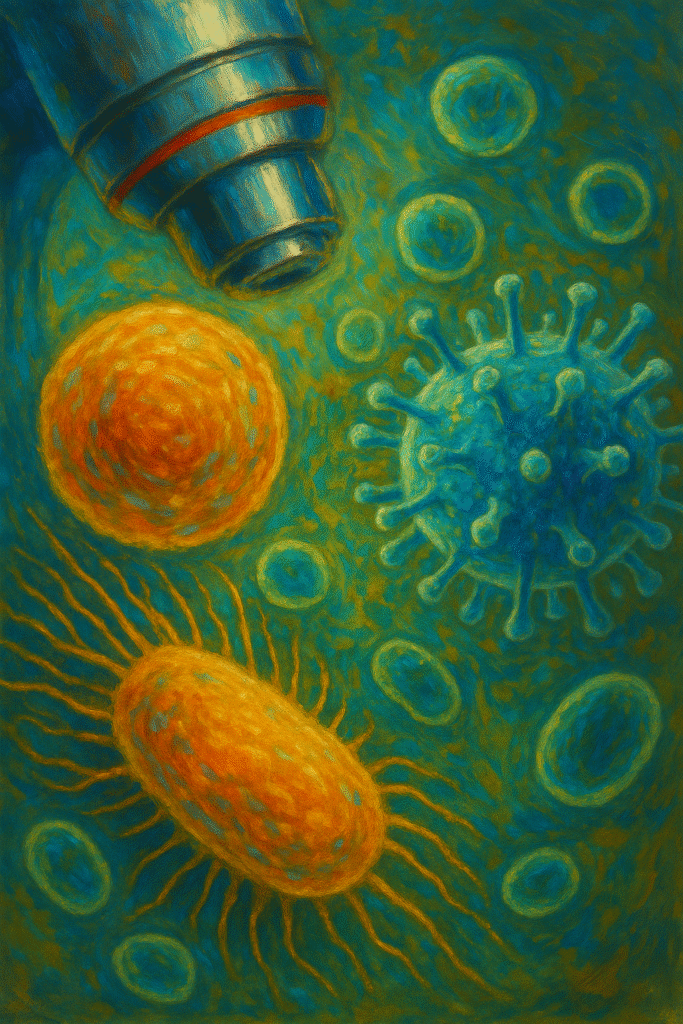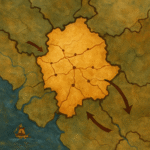In the microscopic world, the smallest visible objects are cells, bacteria, and viruses, measured in micrometers and nanometers. Modern microscopy allows us to see what our naked eyes cannot, revealing the intricacies of life and matter. Here’s an exploration into these fascinating, tiny realms.
Introduction: What is the Smallest Thing We Can Ever See?
The smallest thing visible to the human eye is approximately 0.1 millimeters wide, about the thickness of a human hair. However, with advanced microscopy, we can observe items thousands of times smaller. Discover how microscopic exploration unveils the wonders hidden beyond our perception. For more on microscopic advancements, explore our detailed resources here.
Understanding Visibility: The Human Eye’s Limitations
The human eye can detect particles as small as 0.1 millimeters, but it struggles to see beyond this limit without assistance. This limitation makes microscopic technology essential for visualizing:
* Dust particles
* Pollen grains
* Human cells
According to Scientific American, the naked eye can’t see objects smaller than this boundary, emphasizing the necessity of microscopes for deeper insights.
Advancements in Microscopy: Unlocking the Unseen
Microscopy advancements expanded our knowledge by unveiling entities as small as atoms. What are the types and impacts of these advancements?
Types of Microscopy:
1. Optical Microscopes: Used for viewing larger cells and structures.
2. Electron Microscopes: Essential for observing smaller entities, such as viruses and molecules.
3. Scanning Probe Microscopes: Explores surfaces at the atomic level.
These technologies revolutionized fields ranging from biology to materials science.
Impacts and Breakthroughs:
* Enhanced understanding of cellular structures
* Development of nanotechnology
* Advancements in medical diagnostics
What is the Smallest Thing We Can Actually See?
The smallest entities visible under a microscope include cells, bacteria, and viruses:
* Cells: Basic life units, 10-30 micrometers in size
* Bacteria: Vary from 1-10 micrometers
* Viruses: Range from 20-300 nanometers
Under powerful electron microscopes, even individual atoms become visible, revolutionizing nanotechnology and scientific research.
The Quantum Nanoscale: Science’s Frontier
The quantum nanoscale is where we manipulate atoms and molecules. How do such small manipulations impact us? Here are key insights:
* Materials Engineering: Nano-level manipulation creates stronger, lighter materials.
* Medicine: Nanotech enables targeted drug delivery systems.
* Energy Solutions: More efficient solar cells and batteries incorporate quantum technologies.
A Nature study outlines how smaller scales yield big technological advancements.
Connecting the Dots: A Journey through the Microscopic World
Knowledge of the microscopic world highlights the interconnectedness of life forms. By exploring this microcosm, we learn how:
* Life is intertwined: Even viruses play vital roles in ecosystems.
* Microscopic insights can lead to breakthroughs in fields like epidemiology and agriculture.
Conclusion: Embracing Microscopic Marvels
Understanding and exploring what invisibly shapes our environment offers a broader comprehension of existence. From cells to quantum nanoscale entities, their study stretches scientific and creative boundaries.
Next Steps: Engage with the Unseen
Dive deeper into science at TheNoetik. Explore our resources on microscopy and nanotechnology, and discover the impact of microscopic exploration on your world. Visit our resource center for your scientific exploration journey.
FAQs on Microscopic Exploration
What tools can view the smallest objects?
* Electron microscopes are ideal for seeing viruses and smaller entities.
How small can the naked eye see?
* The eye can generally detect objects down to 0.1 millimeters.
What is the practical application of nanotechnology?
* Its uses range from medical treatments to creating stronger materials.


